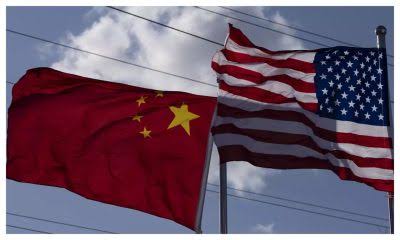Foreign
Trump Withdraws U.S. From UN Human Rights Council, Prohibits Funding For UNRWA
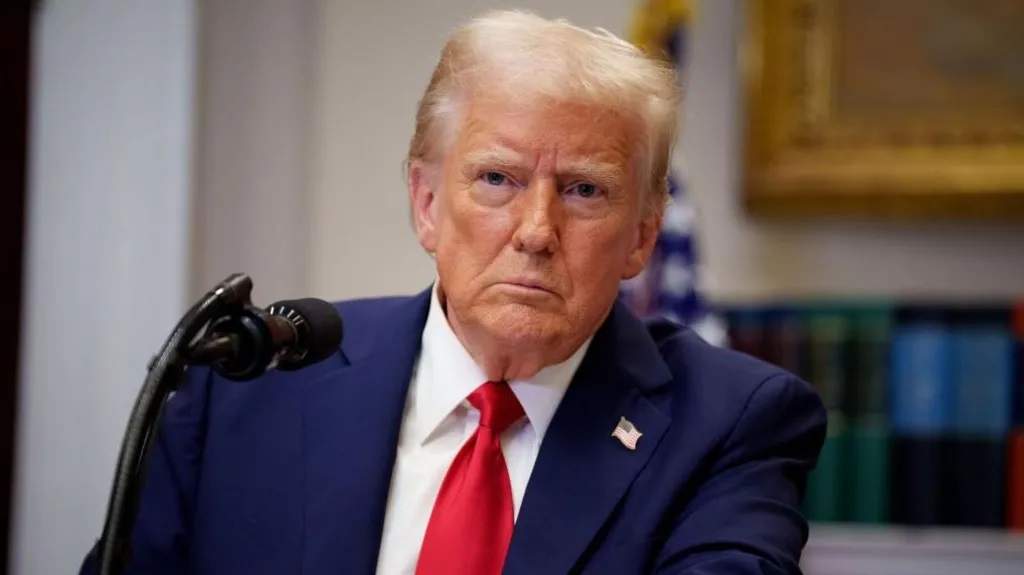
President Donald Trump announced Tuesday that the United States will withdraw from the top U.N. human rights body and will not resume funding for the U.N. agency helping Palestinian refugees.
The U.S. left the Geneva-based Human Rights Council last year, and it stopped funding the agency assisting Palestinian refugees, known as UNRWA, after Israel accused it of harboring Hamas militants who participated in the surprise Oct. 7, 2023, attacks in southern Israel, which UNRWA denies.
Trump’s announcement came on the day he met with visiting Israeli Prime Minister Benjamin Netanyahu, whose country has long accused both the rights body and UNRWA of bias against Israel and antisemitism.
Trump’s executive orders also call for a review of American involvement in the Paris-based U.N. Educational, Scientific and Cultural Organization, known as UNESCO, and a review of U.S. funding for the United Nations in light of “the wild disparities in levels of funding among different countries.”
The United States, with the world’s largest economy, pays 22% of the U.N.’s regular operating budget, with China the second-largest contributor.
“I’ve always felt that the U.N. has tremendous potential,” Trump told reporters in the Oval Office. “It’s not living up to that potential right now. … They’ve got to get their act together.”
He said the U.N. needs “to be fair to countries that deserve fairness,” adding that there are some countries, which he didn’t name, that are “outliers, that are very bad and they’re being almost preferred.”
Before Trump’s announcement, U.N. spokesman Stephane Dujarric reiterated the Human Rights Council’s importance and UNRWA’s work in delivering “critical services to Palestinians.”
Trump also pulled the U.S. out of the Human Rights Council in June 2018. His ambassador to the U.N. at the time, Nikki Haley, accused the council of “chronic bias against Israel” and pointed to what she said were human rights abusers among its members.
President Joe Biden renewed support for the Human Rights Council, and the U.S. won a seat on the 47-nation body in October 2021. But the Biden administration announced in late September that the United States would not seek a second consecutive term.
Trump’s order on Tuesday has little concrete effect because the United States is already not a council member, said council spokesperson Pascal Sim. But like all other U.N. member countries, the U.S. automatically has informal observer status and will still have a seat in the council’s ornate round chamber at the U.N. complex in Geneva.
UNRWA was established by the U.N. General Assembly in 1949 to provide assistance for Palestinians who fled or were expelled from their homes before and during the 1948 Arab-Israeli war that followed Israel’s establishment, as well as for their descendants. It provides aid, education, health care and other services to some 2.5 million Palestinians in Gaza, the occupied West Bank and East Jerusalem, as well as 3 million more in Syria, Jordan and Lebanon.
Before the Oct. 7 Hamas attacks, UNRWA ran schools for Gaza’s 650,000 children as well as health facilities, and helped deliver humanitarian aid. It has continued to provide health care and been key to the delivery of food and other aid to Palestinians during the war.
The first Trump administration suspended funding to UNRWA in 2018, but Biden restored it. The U.S. had been the biggest donor to the agency, providing it with $343 million in 2022 and $422 million in 2023.
For years, Israel has accused UNRWA of anti-Israeli bias in its education materials, which the agency denies.
Israel alleged that 19 of UNRWA’s 13,000 staff in Gaza participated in the Hamas attacks. They were terminated pending a U.N. investigation, which found nine may have been involved.
In response, 18 governments froze funding to the agency, but all have since restored support except the United States. Legislation ratifying the U.S. decision halted any American funding to UNRWA until March 2025, and Trump’s action Tuesday means it will not be restored.
Foreign
Pope Leo XIV, celebrates first Mass, wants Church to be beacon of light

Pope Leo XIV celebrated his first Mass on Friday in the Sistine Chapel where he was elected less than 24 hours earlier, warning of the dangers caused by a lack of faith and hoping the Catholic Church could be a beacon lighting the world’s “dark nights”.
Leo, the former Cardinal Robert Prevost and the first U.S. pope, looked calm as he delivered the Mass in the famous, frescoed chapel with the same cardinals who chose him to be the 267th pontiff and the successor to Pope Francis.
Dressed in relatively simple white and gold vestments, Leo, who was born in Chicago but spent two decades as a missionary in Peru, said a few words in English before continuing his homily in fluent Italian.
In the homily, Leo, 69, painted a picture of the Church he would like to see, saying he would seek to serve as the “faithful administrator” for the Church as a whole.
The new pope, who leads 1.4 billion Catholics around the world, acknowledged that the Christian faith is sometimes “considered absurd” and the preserve of “the weak and unintelligent”.
“A lack of faith is often tragically accompanied by the loss of meaning in life, the neglect of mercy, appalling violations of human dignity, the crisis of the family and so many other wounds that afflict our society,” he said.
MAY 18 INAUGURATION
An inauguration Mass for Leo will be held in St. Peter’s Square on Sunday May 18, the Vatican said.
World and religious leaders are invited to the inauguration, which marks the formal launch of a papacy. Pope Francis’ inauguration in 2013 attracted a crowd estimated at 200,000 people.
The new pope will also leave senior Vatican officials in their roles for the time being, giving him time to decide before making definitive appointments, the Vatican said.
All Vatican senior officials, appointed for five-year terms, serve at the pleasure of the pope. A new pontiff usually rolls over existing mandates at least initially before deciding whether to change key positions.
The pope was elected at the end of a two-day conclave that was wrapped up on Thursday evening when white smoke billowed from the chimney on the Sistine Chapel.
Item 1 of 8 Pope Leo XIV conducts Mass in the Sistine Chapel at the Vatican, May 9, 2025. Vatican Media/Simone Risoluti Handout via REUTERS
Given the nature of the conclaves, when cardinals are shut away from the world and sworn to secrecy, little or nothing is likely to emerge – at least for now – about how Leo obtained the required two-thirds majority of the vote so swiftly.
The successor to Pope Francis, who died last month at the age of 88, inherits a number of major challenges, ranging from a budget shortfall to divisions over whether the Church should be more welcoming towards the LGBT community and divorcees, and should let women play a greater role in its affairs.
He will also have a packed agenda, with the Vatican celebrating a Holy Year that brings millions of additional tourists to Rome.
THE FIRST US POPE
Before Leo’s election, U.S. cardinals had largely been written off as papal contenders because of a widespread assumption that the global Church could not be run by a superpower pope.
However, he also holds Peruvian citizenship, meaning that he has deep knowledge of both the West and less developed nations.
U.S. President Donald Trump was quick to congratulate Leo. However, the new pope has a history of criticizing Trump and Vice President JD Vance’s policies, according to posts on the X account of Robert Prevost.
Leo worked for decades in the north of Peru, first as a missionary and later as Bishop of Chiclayo from 2015 to 2023. Catholics took to the streets of the small city in northwestern Peru, and church bells rang out to celebrate the election of a man who they embrace as one of their own.
One of the clues to what kind of a Church leader Leo will be was in his choice of name. The last pope with this name was Leo XIII, who led the Church from 1878-1903. He was known for his devoted focus to social justice issues.
Prevost became a cardinal only in 2023. He has given few media interviews and is known to have a shy personality.
Francis brought him to Rome two years ago to head the Vatican office in charge of choosing which priests should serve as Catholic bishops, meaning he has had a hand in selecting many of the world’s bishops.
Foreign
Inaugural Mass of Pope Leo XIV to be held on May 18 – Vatican

The Vatican had announced that Pope Leo XIV will be inaugurated on Sunday, May 18, 2925, in St Peter’s Square.
World leaders will gather for the event which will be held 10 days after the election of Robert Francis Prevost as the first United States head of the world’s 1.4 billion Catholics.
The Vatican said the new pontiff will meet with journalists on Monday and with diplomats accredited to the Holy See the following Friday.
His first general audience will be on Wednesday May 21, 2025, and he will meet with members of the Roman Curia, top Vatican officials, on May 24, 2025.
Cardinal Robert Prevost, an American-born cleric and seasoned Vatican official, was elected Pope on Thursday, May 8, 2025, taking the name Leo XIV.
Foreign
US Supreme Court Allows Trump’s Ban On Trans Troops To Take Effect

A divided US Supreme Court on Tuesday allowed President Donald Trump’s ban on transgender military personnel to take effect while litigation plays out, putting thousands of troops at risk of dismissal.
The ruling — which the court’s three liberal justices opposed — is a significant victory for Trump, who has made rolling back transgender rights a major part of his second term in office, and has railed against judges who blocked parts of his agenda.
Lambda Legal and the Human Rights Campaign Foundation — which filed the lawsuit that had resulted in a lower court temporarily blocking the implementation of the ban — slammed the Supreme Court’s decision.
The ruling “is a devastating blow to transgender servicemembers who have demonstrated their capabilities and commitment to our nation’s defense,” the organizations said in a statement .
“Transgender individuals meet the same standards and demonstrate the same values as all who serve. We remain steadfast in our belief that this ban violates constitutional guarantees of equal protection and will ultimately be struck down,” they said.
White House Press Secretary Karoline Leavitt hailed the ruling as “another MASSIVE victory in the Supreme Court,” saying in a post on X that Trump and Pentagon chief Pete Hegseth “are restoring a military that is focused on readiness and lethality — not DEI or woke gender ideology.”
Hegseth meanwhile responded to the news with a post on his personal X account that said: “No More Trans @ DoD.”
In a January 27 executive order, Trump stated that “expressing a false ‘gender identity’ divergent from an individual’s sex cannot satisfy the rigorous standards necessary for military service.”
Shifting policies
The Pentagon followed that up with a memo issued in late February stating that it would remove transgender troops from the military unless they obtain a waiver on a case-by-case basis, as well as prevent transgender people from joining.
The Supreme Court’s decision to allow the ban to take effect means thousands of currently serving troops could be removed from the ranks.
The restrictions in the Pentagon memo are aimed at those who have been diagnosed with gender dysphoria — of whom there were 4,240 serving in the military as of late last year, according to a senior defense official — as well as those who have a history of the condition or exhibit symptoms of it.
Transgender Americans have faced a roller coaster of changing policies on military service in recent years, with Democratic administrations seeking to permit them to serve openly, while Trump has sought to keep them out of the ranks.
The US military lifted a ban on transgender troops in 2016, during Democrat Barack Obama’s second term as president.
Under that policy, trans troops already serving were permitted to do so openly, and transgender recruits were set to start being accepted by July 1, 2017.
But the first Trump administration postponed that date to 2018 before deciding to reverse the policy entirely.
Trump’s restrictions on transgender military service — which underwent changes in response to various legal challenges — eventually came into force in April 2019 following a protracted legal battle that went all the way to the nation’s top court.
His Democratic successor Joe Biden moved to reverse the restrictions just days after he took office in 2021, but Trump was reelected last year after making clear he would again seek to target transgender rights.
Transgender issues have roiled US politics in recent years, as states controlled by Democrats and Republicans have moved in opposite directions on policies ranging from medical treatment to what books on the topic are allowed in public or school libraries.
AFP
-
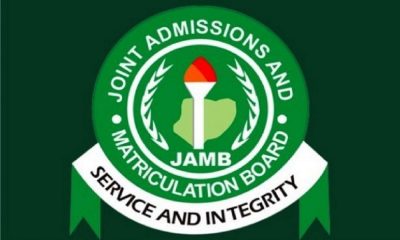
 Education11 hours ago
Education11 hours agoTeenage girl drag JAMB to court over alleged hijab ban during UTME
-

 News14 hours ago
News14 hours agoTInubu admits taking tough decisions to enable Nigeria grow
-
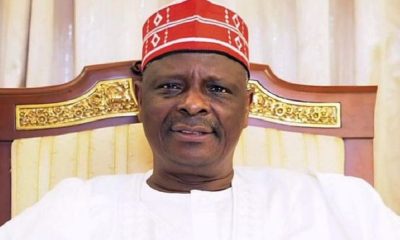
 News8 hours ago
News8 hours agoDefections: It’s a massive betrayal against NNPP -Kwankwaso cries out
-
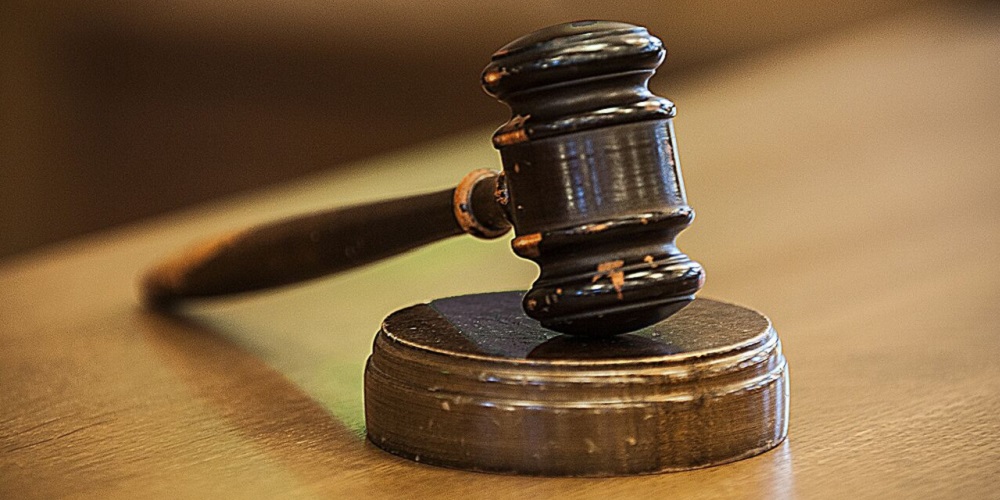
 News13 hours ago
News13 hours agoCourt orders blood transfusion for two-year-old girl despite her parents’ objections
-
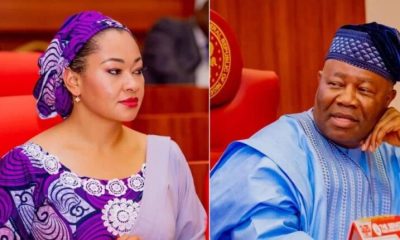
 News14 hours ago
News14 hours agoWhy I Issued ‘Mock’ Apology To Akpabio – Natasha
-

 News13 hours ago
News13 hours agoIntroducing Ebule Oritsemeyiwa, a 16-yr-old who scored 334 in 2025 UTME
-

 News13 hours ago
News13 hours agoBritish-Nigerian art expert pleads guilty to terrorism financing
-

 News4 hours ago
News4 hours agoHow doctor stole one of my twins during birth, Abuja housewife narrates nasty experience


